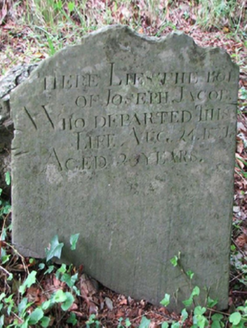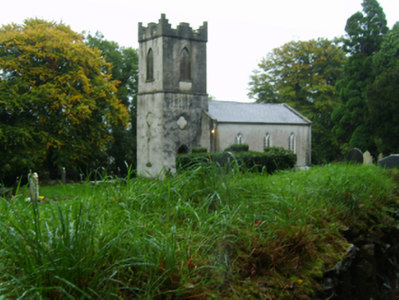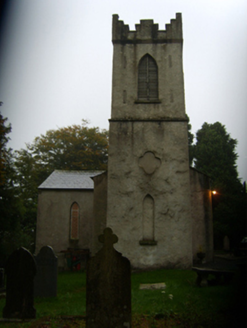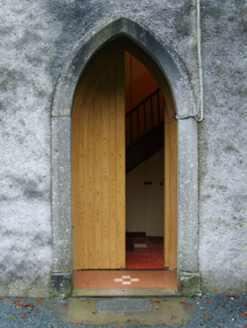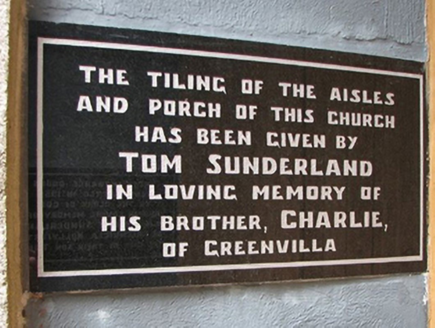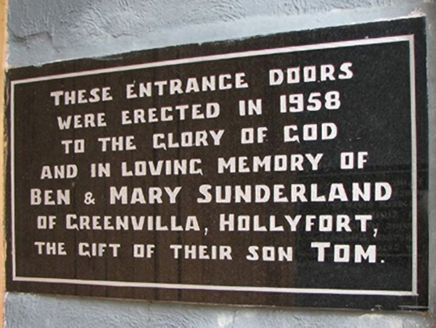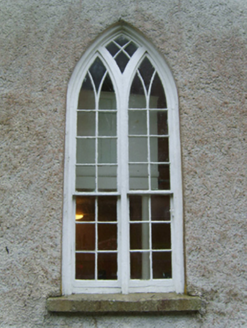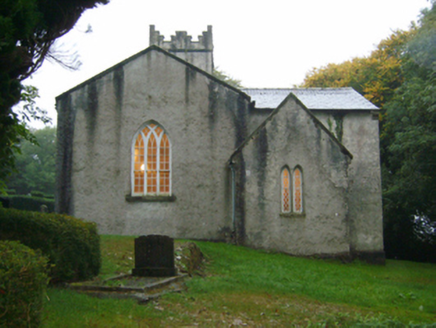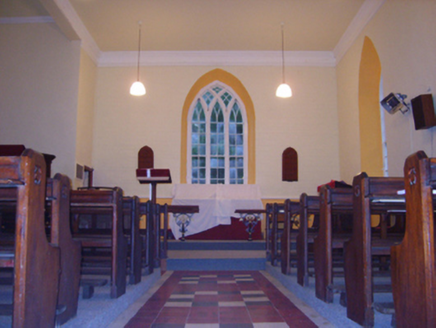Survey Data
Reg No
15700615
Rating
Regional
Categories of Special Interest
Architectural, Artistic, Historical, Social
Original Use
Church/chapel
In Use As
Church/chapel
Date
1810 - 1815
Coordinates
311264, 164278
Date Recorded
03/10/2007
Date Updated
--/--/--
Description
Detached three-bay double-height Board of First Fruits Church of Ireland church, built 1813, on a T-shaped plan originally three-bay double-height single-cell comprising three-bay double-height nave opening into single-bay (single-bay deep) double-height transept (north); single-bay two-stage tower to entrance (west) front on a square plan. Repaired, 1821. "Improved", 1852, producing present composition. Restored, 2004. Pitched slate roof on a T-shaped plan with clay ridge tiles, lichen-spotted coping to gables, and cast-iron rainwater goods on roughcast eaves retaining cast-iron octagonal or ogee hoppers and downpipes. Part ivy-covered roughcast battered walls; roughcast surface finish (tower) with lichen-spotted stringcourses including lichen-spotted stringcourse (bell stage) supporting crow stepped battlemented parapet having lichen-spotted coping. Pointed-arch window openings with cut-granite sills, timber Y-mullions, and concealed dressings framing six-over-six timber sash windows without horns having Y-tracery glazing bars. Pointed-arch window opening (east) with cut-granite sill, interlocking timber Y-mullions, and concealed dressings framing six-over-six timber sash windows without horns having Y-tracery glazing bars. Lancet blind opening (tower) with cut-granite sill, and concealed dressings framing roughcast infill. Pointed-arch openings (bell stage) with cut-granite sills, and concealed dressings framing applied timber mullions on louvered timber fittings. Interior including vestibule (west) retaining staircase on a dog leg plan with timber balusters supporting carved timber banister terminating in timber newels; segmental-headed door opening into nave with timber panelled double doors having overpanel; full-height interior with timber panelled choir gallery (west) on cast-iron pillars, central aisle between quatrefoil-detailed timber pews, Gothic-style timber panelled pulpit on an octagonal plan with Gothic-style timber clerk's desk, carpeted stepped dais to chancel (east) with oak leaf-detailed barley twist balusters supporting carved timber communion railing centred on cloaked altar below "East Window", and moulded plasterwork cornice to ceiling. Set in landscaped grounds with rendered piers to perimeter having pyramidal capping supporting spear head-detailed wrought iron double gates.
Appraisal
A church erected with financial support from the Board of First Fruits (fl. 1711-1833) representing an integral component of the early nineteenth-century ecclesiastical heritage of north County Wexford with the architectural value of the composition suggested by such attributes as the nave-with-entrance tower plan form, aligned along a liturgically-correct axis; the "pointed" profile of the openings underpinning a contemporary Georgian Gothic theme with the chancel defined by a restrained "East Window"; and the crow stepped battlements embellishing the tower as a picturesque eye-catcher in the landscape: meanwhile, aspects of the composition clearly illustrate the continued development or "improvement" of the church to designs signed (1852) by Joseph Welland (1798-1860), Architect to the Ecclesiastical Commissioners (appointed 1843). Having been well maintained, the elementary form and massing survive intact together with substantial quantities of the original fabric, both to the exterior and to the interior, including crown or cylinder glazing panels in hornless sash frames: meanwhile, contemporary joinery; and sleek plasterwork refinements, all highlight the artistic potential of a church making a pleasing visual statement in a rural village street scene.
